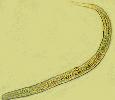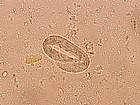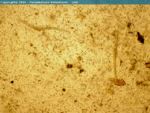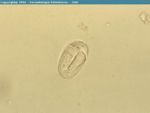Strongyloides
Overview
This is the only genus of veterinary importance in the super-family Rhabditoidea. There are a number of species that are of particular importance and these are mainly host specific.
Strongyloides westeri
This is a parasite of the horse and is most commonly seen in young foals, less than six months in age. This is usually the fisrt parasite to which foals are exposed and therfore they have very little immunity to these infections. The predeliction site for these worms is the small intestine.
Morphology
The distinguishing features of this worm are:
- Very small, 6-9mm long
- Slender, hair-like
- Long oesophagus (up to one third of body length).
- Intestines and ovaries intertwined in caudal body
- Blunt ended tail
The eggs are small and oval with a thin shell, they will often hatch in the large intestine so L1 larvae are expelled in the hosts faeces.
Life-Cycle
S. westeri has a typical strongyloides life cycle, with both a free living and parasitic cycle. The free living cycle involves male and female worms reproducing sexually on the ground, this can occur for several generation with no parasitism taking place.
- Parasitic and free-living (non-parasitic) phases.
- Prepatent period 1week (embryonated egg, 50-60µm).
- Infection by:
- ingestion of L3 in mare's milk or grass; and
- skin penetration.
Pathogenicity
- Foals - severe enteritis, diarrhoea (heavy burdens).
- Adults - normally immune; may act as carriers, e.g. mare.
Control
- Regular anthelmintic treatment.
- Good hygiene.



